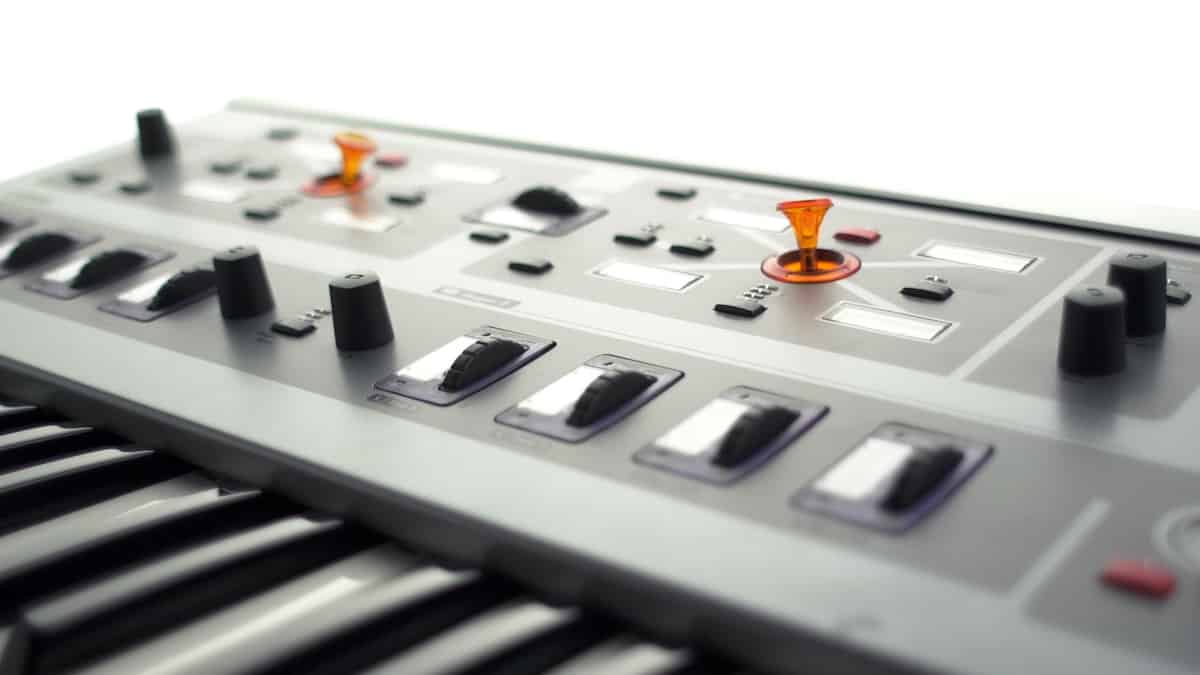Books
Joysticks for Synth Players – Game On!

Joysticks are not only for gamers! They’ve been a popular and practical option for modulation and control in the world of electronic music since their very beginnings. Kim Bjørn takes a look…
Joysticks for Synth Players – Kim Bjørn, the author of PUSH TURN MOVE, takes a look at this very interactive control option – one among many controls like knobs, faders, wheels, benders, etc.
First things first: The default position for the joystick is in the center, from which up to four different (or two bipolar) parameters can be controlled on a vertical vs. horizontal axis. Some joysticks have a ‘spring back’ function that allows them to return precisely to the center after being moved around. These qualities make the joystick perfect for continuous or spontaneous modulation.
The beginning of something
The EMS VCS3 from 1969 featured a joystick with adjustable range control on each axis. Either axis could control multiple parameters based on routings set up elsewhere on the VCS3. This hands-on control was important for real-time sound control since the VCS3 didn’t always have a keyboard attached.
One synth player making heavy use of adjusting simultaneous parameters (like Filter cutoff and LFO rate) with the joystick on the VCS3 was Jean-Michel Jarre, who created the iconic swirls, swooshes, and sweeps heard on the Oxygene, Equinoxe, and Magnetic Fields albums. The recent SYNTRX from Erica Synths in Latvia is a modern take on the VCS3 and obviously also includes the iconic modulation matrix as well as the joystick.

The love of joysticks
While Roland opted for the combined Pitch- and modulation stick, KORG went another route with the Korg Sigma from 1979 – after flirting with the usual pitch- and modulation wheels. It’s a bi-timbral synthesizer, containing a synth and instrument preset section which can be combined. The first joystick controls pitch, noise, and vibrato – the second joystick controls the highpass and lowpass filters. In the 1980s, KORG again implemented the joystick on the Poly-61, Poly-800, DW-6000, and DW-8000. In these cases, the horizontal axis controlled pitch bending and upwards created pitch vibrato while downwards controlled the amount of filter modulation. Their quest for expressive controls later resulted in the advanced left-hand controls of the Prophecy, and even the first Minilogue had a pitch-bend stick, while the Minilogue XD introduced the joystick again – this time in a less-fragile version, and fully programmable for all four directions.
Perfect for vector synthesis control
First introduced by Sequential Circuits in the Prophet VS synthesizer from 1986, vector synthesis is based on the morphing between four digital waveforms, which was ideally done with the featured joystick. The iProphet from Arturia provides a visual overview of the parameters. The envelope mixer allows morphing of the joystick movement over a specified time for each of the four envelope stages, creating evolving soundscapes or rhythmic effects. The flat surface of the iPad – and other touch-based surfaces, like those on the KORG KAOSS Pads, or on the touch screen of the recent AKAI MPC range – lend themselves towards X-Y based control resembling the same movements as that of a joystick – though without the same physical feedback.

The joy of Eurorack
Panning a sound source between the four corners of a surround-sound space is easily done with a joystick. The Intellijel Planar2 allows the user to do it in the modular Eurorack environment. Other manufacturers – like Doepfer, Befaco, Erica Synths, and Wavelicker – also features joysticks in their product range.
Advanced sound shaping
On the cleverly designed Hartmann Neuron synthesizer – designed by Axel Hartmann, and first introduced in 2001 – five joysticks provide real-time tweaking of many sound parameters at once – each blending between two opposing sound characteristics. The ‘mushroom shape’ allows the joysticks to be easily operated by one finger, and the movement can be recorded as part of the sound.

Want to check many more interaction methods, synth designs, and software options for controlling and creating sound? Check PUSH TURN MOVE from Bjooks.


















